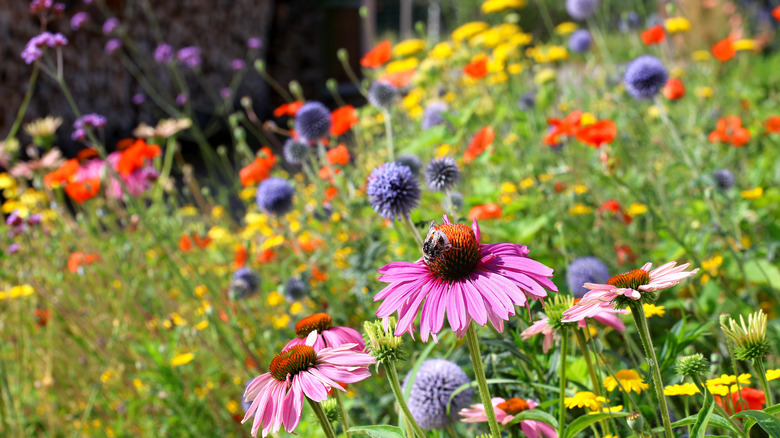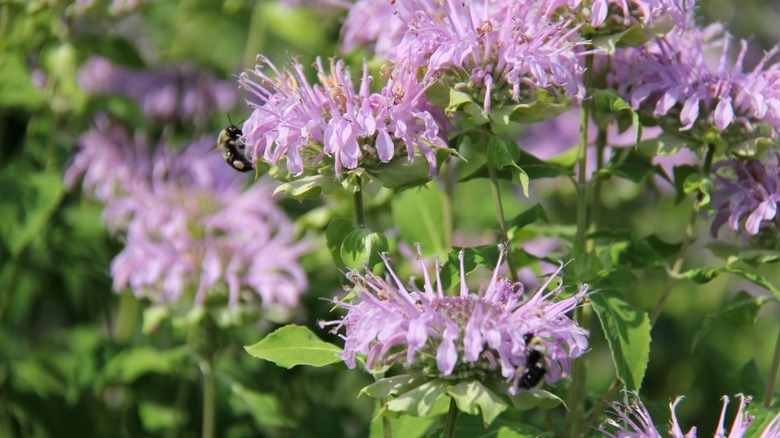The Flower Color You Might Want To Avoid If You're Trying To Attract Bees
As the bee population continues to decline at an alarming rate, it's important to do what we can to help support these important insects. Bees are not only critical parts of human food production thanks to their pollinating capabilities, but they also play other important roles in ecosystems. For these reasons, you might be interested in planting flowers to bring more bees into your yard and garden and provide them with food. When you're planning your bee-friendly garden, though, you may want to skip red flowers or plant fewer of them, because these insects cannot see red.
This may be surprising, since red flowers are among some of the most popular plants in home gardens, from roses to petunias. Not only do they provide vibrant hues and character, but they are notable for attracting other pollinators, such as hummingbirds. In fact, red is considered the one color that instantly invites more hummingbirds to your garden. But if you're trying to attract bees, know that red flowers alone might not suffice, and you may need to plant other colors as well.
Why bees can't see red flowers very easily
Bees cannot see red wavelengths of light. This doesn't mean that bees will purposely avoid red flowers, and the color certainly doesn't harm them. The downside to red flowers instead lies in their lack of attractiveness to bees. If these flying insects cannot see the flowers, there's a possibility they might skip them over and not enjoy the important pollen they contain. It's also worth noting that most other pollinating insects, like wasps, also cannot see the color red very well. They can, however, see other reddish hues like orange.
All of this isn't to say that you shouldn't plant red flowers in your garden at all. Bees may still detect red flowers thanks to ultraviolet light. They also possess the ability to smell flowers, including red ones. Also, remember that these hues are important for attracting hummingbirds, and they can add aesthetic appeal to your yard and garden. Rather, the biggest lesson here is not to exclusively plant red flowers. Instead, try planting a variety of flowers that can help benefit multiple pollinating species.
In terms of color, bees are most likely to see those that are blue, violet, and purple. It's also helpful to focus on native flowers as much as possible. Since choosing between native and non-native plants is more complicated than you think, you can ask for advice from your local nursery as a starting point.

